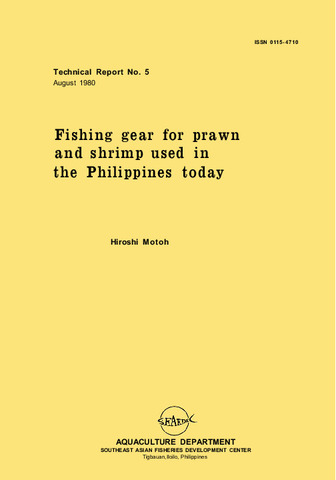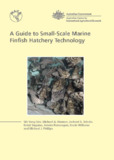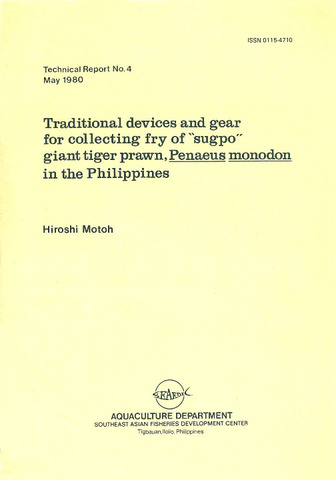Alkalinity control in ozonated shrimp pond water
- Global styles
- MLA
- Vancouver
- Elsevier - Harvard
- APA
- Help
Share
นามธรรม
The use of ozone for aquaculture has been shown to be effective, not only for disinfection of pathogenic bacteria and viruses, but also for removal of toxic ammonia, nitrite and hydrogen sulfide. However, ozonation of shrimp pond water has a tendency to decrease alkalinity, thereby causing extreme pH fluctuations and affecting the buffering capacity of the pond water. Since the maintenance of alkalinity at optimum levels is very important for shrimp culture, basic research to find suitable strategies to maintain a desired level of alkalinity studies were conducted by ozonating artificial seawater containing ammonia. In the ozonation experiments, pH, alkalinity and total ammonia were monitored. Alkalinity decreased while ammonia was oxidized by oxidants (hypobromous acid) at the rate of 4.2 ppm alkalinity per 1 ppm NH3-N at pH 8.3. The decreasing trend in pH was also observed during ozonation. Different types of liming materials (agricultural lime, marble dust, and coral sand) were evaluated as alkalinity supplements. However, they were found to be ineffective due to their low solubility. Commercial agricultural lime was found to increase alkalinity by recarbonation using diluted CO2 gas. Other more soluble liming materials, such as sodium bicarbonate (SB) and hydrated lime (HL) were tested as possible alkalinity supplements. Sodium bicarbonate (from Australia and China) A-SB and C-SB, and hydrated lime (commercial and from sugar mill, Philippines) c-HL and s-HL were found to increase alkalinity at the rate of 0.6, 0.6, 0.16 and 0.9 mg/L per 1 ppm liming material, respectively. The pH of the ozonated water with 40 ppm sodium bicarbonate was more stable compared to that with 40 ppm hydrated lime. This implies that with sodium bicarbonate, alkalinity and pH of ozonated pond water can easily be maintained at optimum levels. Hence, the use of ozonation for oxidation, mixing and disinfection, coupled with proper alkalinity control can bring about the maintenance of good water quality for prawn cultivation.
การอ้างอิง
Whangchai, N., Migo, V. P., Young, H. K., & Matsumura, M. (2002). Alkalinity control in ozonated shrimp pond water. In C. R. Lavilla-Pitogo & E. R. Cruz-Lacierda (Eds.), Diseases in Asian aquaculture IV: Proceedings of the Fourth Symposium on Diseases in Asian Aquaculture, 22-26 November 1999, Cebu City, Philippines (pp. 113-124). Fish Health Section, Asian Fisheries Society.
Type
Conference paperISBN
9718020160คอลเลกชัน
Related items
Showing items related by title, author, creator and subject.
-
Series: Technical report / SEAFDEC Aquaculture Department; 5
Fishing gear for prawn and shrimp used in the Philippines today
Motoh, Hiroshi (Aquaculture Department, Southeast Asian Fisheries Development Center, 1980)This paper describes various types of shrimping and prawning gear and devices, most of which have been traditionally used in the Philippines, with some ecological notes. This study provides basic information on prawn culture ... -
Series: Asia-Pacific Marine Finfish Aquaculture Network; Publication No. 2005–01
A guide to small-scale marine finfish hatchery technology
Sim, Sih-Yang; Rimmer, Michael A.; Toledo, Joebert D.; Sugama, Ketut; Rumengan, Inneke; Williams, Kevin; Phillips, Michael J. (Network of Aquaculture Centres in Asia-Pacific, 2005)Recent improvements in hatchery production technology for high-value marine finfish species such as groupers have led to an increased interest in setting up hatcheries to produce fingerlings for aquaculture. Small-scale ... -
Series: Technical report / SEAFDEC Aquaculture Department; No. 4
Traditional devices and gear for collecting fry of "sugpo" giant tiger prawn, Penaeus monodon in the Philippines
Motoh, Hiroshi (Aquaculture Department, Southeast Asian Fisheries Development Center, 1980)Eight typical devices and gears for catching the wild fry of the giant tiger prawn, Penaeus monodon, locally called sugpo are described and illustrated. There are three stationary ones vis. fry lure, fry filter net and set ...





